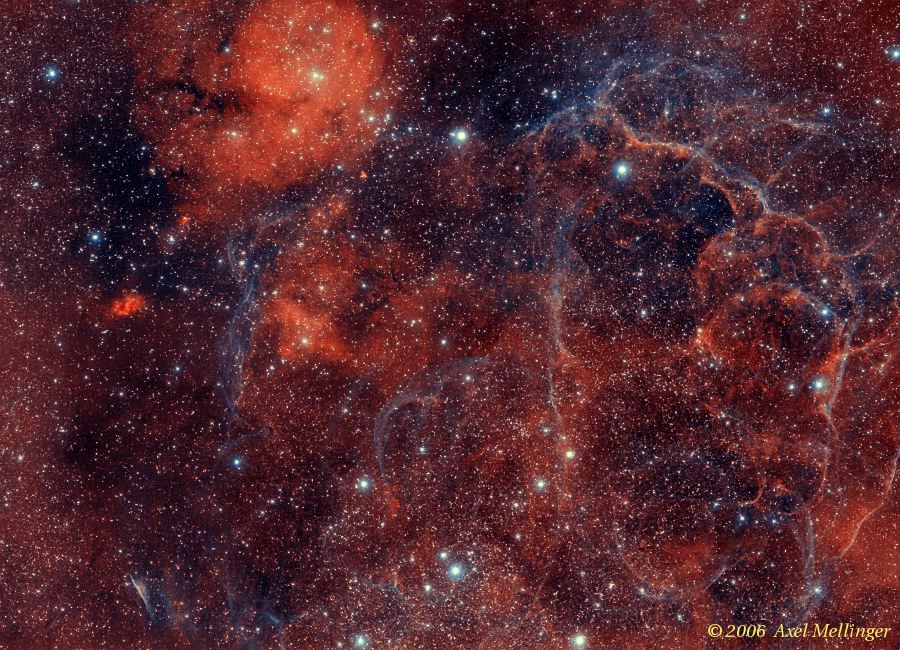Vela Supernova Remnant

The narrow streak near the bottom left corner is the Pencil Nebula (NGC 2736), discovered by John Herschel in the 1830s. The NGC catalog lists it as a galaxy (visually, its appearance is indeed similar to an edge-on galaxy), but it is actually a filament of the Vela SNR with strong O-III emission. The brightest emission region near the top edge is RCW 33, also known as Gum 17. Separate four-frame mosaic images were taken through narrow-band (13 nm) H&alpha and O-III (doubly ionized oxygen) filters. The two-color picture was assembled using an approach inspired by Steve Cannistra's bicolor technique. Star sizes reduced by resampling the image 2×, applying a minimum filter, and downsampling it to the original resolution. |
| Camera | : | Starlight Xpress SXV-H9 CCD camera |
| Lens | : | Minolta 2.8/135 mm (Ha: f/2.8, O-III: f/3.5), mounted with a home-made adapter |
| Filter | : | Astronomik Ha and OIII filter |
| Mount | : | Vixen Super Polaris DX |
| Guiding | : | SBIG ST-4 autoguider |
| Dates | : | 21 Mar. 2004 (Ha), 04 Mar. 2006 (O-III) |
| Exposure | : | Ha: 2x15 min; OIII: 3x10 min per frame |
| Site | : | Ha: Cederberg Observatory, O-III: Koornlandskloof Guest Farm |
| Processing | : | Bias, dark frame, flat field correction, registration and digital development: IRAF; mosaic assembly: SExtractor, Match, custom software and Swarp; post-processing: Gimp |
 Back to image gallery
Back to image gallery
